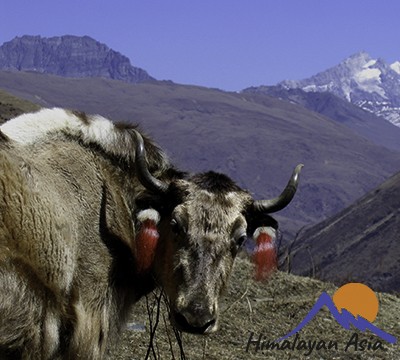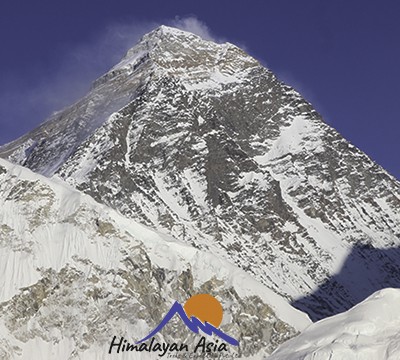About High Altitude Sickness
Trekking in Nepal, particularly on popular routes like the Everest Base Camp Trek, Everest Three Passes Trek, Annapurna Circuit Trek, Upper Mustang Trek, and Manaslu Circuit Trek, offers breathtaking landscapes but also poses the risk of high altitude sickness (HAS). Preventing HAS is crucial for a safe and enjoyable trek. Acclimatization is key; trekkers should ascend gradually, allowing their bodies time to adjust to the thinner air. It's recommended to follow the "climb high, sleep low" rule and include acclimatization days in itineraries, especially on challenging treks like the Everest Three Passes Trek. Staying well-hydrated is essential, as dehydration can exacerbate symptoms of altitude sickness. It's advisable to drink at least 3-4 liters of water daily. A balanced diet, rich in carbohydrates, can also aid in acclimatization. Avoiding alcohol and smoking is important as these can impair acclimatization.
Medications such as Diamox can be used preventively, but it's best to consult a doctor before taking them. Recognizing the symptoms of HAS, such as headaches, nausea, dizziness, and fatigue, and responding promptly is crucial. If symptoms persist or worsen, descent to a lower altitude is the most effective remedy. Trekkers should also be mindful of the pace; it's important to walk slowly and steadily, conserving energy. Adequate clothing and gear are essential to keep warm and comfortable, as cold can increase the risk of altitude sickness. Trekkers should always be prepared to adjust their plans and prioritize their health, as pushing through symptoms can lead to severe conditions like High Altitude Pulmonary Edema (HAPE) or High Altitude Cerebral Edema (HACE). For those embarking on these treks with Himalayan Asia Treks, experienced guides are a valuable resource, providing guidance and assistance in managing altitude-related challenges. They also ensure that itineraries include adequate acclimatization time, enhancing trekkers' safety and overall experience in the majestic mountains of Nepal.
Altitude sickness or mountain sickness refers to an illness that occurs because of the reduction in exact level or amount of oxygen above the sea level, usually ranging from 4,800 feet or 1500meters. Altitude sickness incorporates many problems, including minor headaches and weariness to the life-threatening formation of fluid in the brain or lungs and even fatality while moving from moderate height to high altitudes in Nepal Himalaya Trekking.
The problem occurs whenever a person travels from low altitude to high altitude in less than a single day, like, for instance, more than 8,000 feet. However, depending on the specific health condition of a person, altitude sickness may take place even at low altitudes, i.e., about 4800 feet or 1500meters.
How can I find I am suffering from high altitude?
You may identify that you are suffering from high altitude sickness based on the following early symptoms while in Himalaya trekking in Nepal. Acute mountain sickness-related symptoms usually appear within a few hours of your movement to high altitudes. However, these vary depending solely on the severity of your health condition.
Mild Acute Mountain Sickness
In case you suffer from a mild type of acute mountain sickness or high altitude sickness, you may often experience a few mild symptoms-
- Dizziness
- Headache
- Insomnia
- Muscular aches
- Vomiting and nausea
- Appetite loss
- Irritability
- Swelling of feet, hands, and face
- The rapid rate of heartbeat
- Breathing shortness in combination with physical exertion
Severe Acute Mountain Sickness
Severe cases associated with acute mountain sickness may result in relatively more intense symptoms, affecting the lungs, heart, muscles, and nervous system. These severe symptoms include-
- Confusion because of swelling in the brain
- Breathing shortness due to the presence of fluid in the lungs
- Congestion in the chest
- Coughing
- Skin discoloration and pale complexion
- Inability to move or walk and lack of physical balance
- Social withdrawal.
Types of altitude sickness
Altitude sickness may be of three different types, which include
AMS, i.e., Acute Mountain Sickness
AMS, i.e., Acute Mountain Sickness, constitutes the mildest form of the altitude sickness problem. In this case, trekkers may experience a hangover type of feeling and suffer from headaches, dizziness, nausea, and muscular aches.
HAPE, i.e., High Altitude Pulmonary Edema
HAPE, i.e., High Altitude Pulmonary Edema, involves the formation of fluid within the lungs, which may be dangerous and life-threatening for trekkers.
HACE, i.e., High Altitude Cerebral Edema
HACE, i.e., High Altitude Cerebral Edema, involves the most severe type of altitude sickness and takes place whenever there is fluid in the human brain. It is most life-threatening, and you require immediate medical attention from the doctor.
How to prevent high altitude sickness in Trekking in Nepal
Most of the time, trekkers may suffer from high altitude sickness while trekking in Nepal. However, one can avoid this problem by taking some simple and easy steps, including the following.
Drink 5 Liters of Water in a Day
Drinking approximately 5 liters of water in a day is the simplest possible way to avoid high altitude sickness. This hiking is accessible at low elevations when the temperature is high, while it becomes burdensome when the temperature goes down, and individuals perspire less. After having a few liters of water, one can feel adequately hydrated, but as the body does extra work with less oxygen, it needs more water. Hence, you should essentially force down to consume 5 liters of water in a day without any exception.
Strictly Avoid Huge Elevation Gains in a Single Day
High altitude trekkers should avoid significant elevation gains in a single day, i.e., not more than 1,500 vertical feet. Unfortunately, most individuals have a common misconception associated with high altitude trekking because physical condition judges the ability of one's body to fend off the problem of altitude sickness.
Because of this, most people in good shape or good physical fitness overlook the rules related to acclimatization and move too high at the fastest possible speed and thereby face problems. Hence, the itinerary designed by our Himalayan Asia Trek factor altitude gains and a few hiking days consequently end up relatively early. Therefore, we always recommend you embrace your pace, rest the legs, and stay hydrated regularly.
Sleep Low to Climb High
You may acclimatize in a better way if you opt to expose yourself to high altitudes but return to low height for sleep. Once you set up your camp, you should scramble up to a nearby hill, scope out from the scenery, and head yourself downward to have rest during the nighttime.
When you get a rest day, you may grab the opportunity to hike to higher elevations and return to hundred vertical feet. At high altitudes, i.e., at about 10,000 feet or higher, this rule becomes essential. This thing will happen because; your body learns to cope up with considerably less amount of oxygen.
Eat Healthy and Maintain Your Carbohydrate Levels
Your body does more work than you usually do. Thus, you should make sure to stay nourished and intake massive carbohydrate levels. The best thing is that we provide you with necessary snacks, including chocolates, nuts, and other essential nutritious foods to keep trekkers nourished while trekking at heights.
Take Altitude Sickness Medicine in Advance
You should make sure to take altitude sickness medicine in advance to control your symptoms. In addition, you should consult with the doctor before its use.
- Ibuprofen to treat symptoms related to mild altitude sickness, which include nausea and headaches.
- Diamox or Acetazolamide acts as a respiratory stimulant to help in metabolizing a higher amount of oxygen in the human body, particularly during the nighttime. It accelerates the acclimatization process and acts as a prophylactic, especially by making unavoidably significant ascents.
Therefore, with some essential tips, you should easily overcome the problem of acute altitude sickness.


